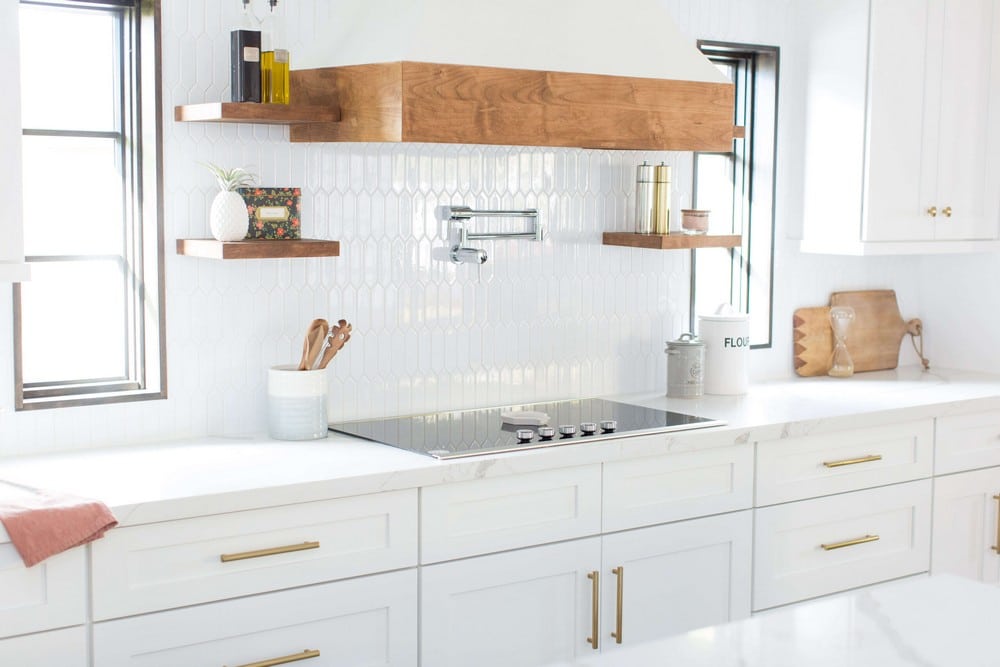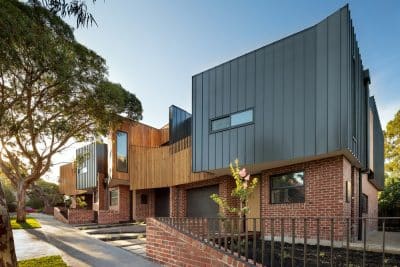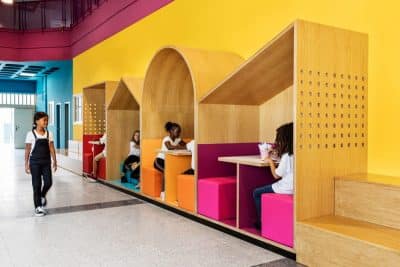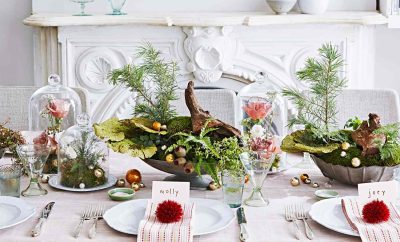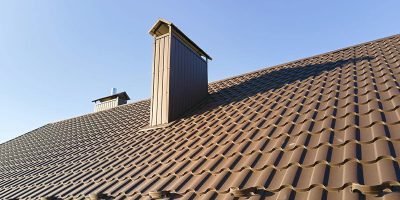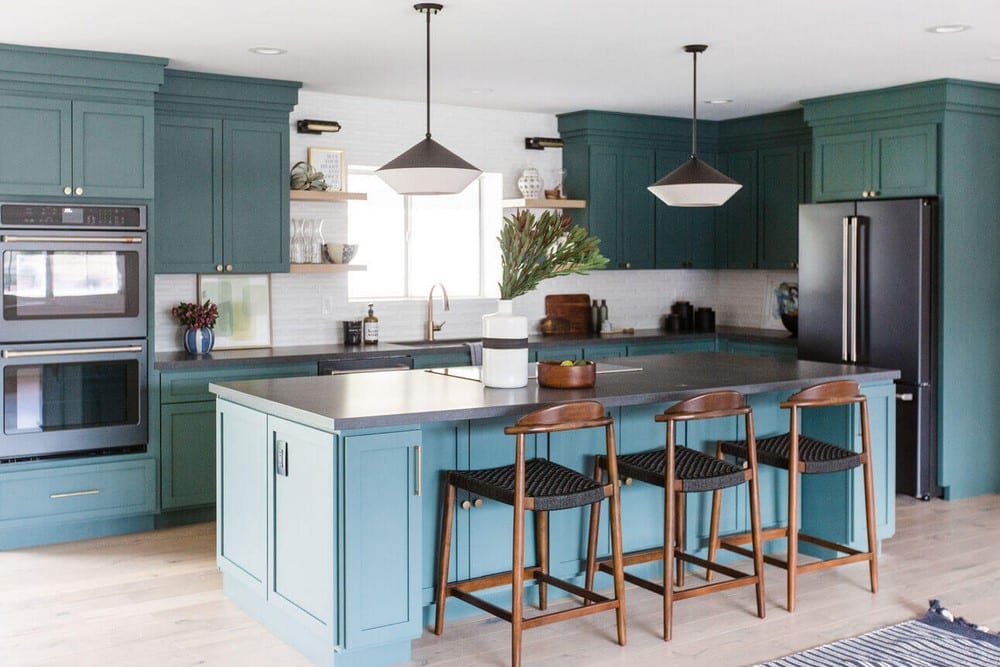
The kitchen is the heart of the home, and its design plays a pivotal role in both functionality and aesthetics. Among the key elements that define a kitchen’s visual appeal and practicality, cabinetry stands out as a crucial component.
Choosing the perfect cabinetry involves thoughtful consideration of various factors to ensure that it not only complements your style but also meets the unique needs of your household.
Assessing Your Needs
The journey of selecting the perfect cabinets for your kitchen begins with a thorough assessment of your needs. Identifying your storage requirements is the first step and it involves a deep consideration of various elements. From the commonplace utensils, cookware, and appliances that demand accessible yet organized storage, to the pantry space for provisions, spices, and cutting boards.
Someone who frequently cooks may prioritize easy accessibility, while occasional chefs might lean towards a more minimalist approach. Family size and lifestyle usually influence the type and amount of storage needed. A large family may require more expansive pantry space, while a smaller household might choose a space-efficient design.
Determining Your Style
The choice between traditional and modern looks sets the main tone for your kitchen ambiance. Traditional styles exude timeless elegance, often characterized by intricate detailing and classic designs, while modern aesthetics embrace sleek lines and minimalist features, giving a contemporary and streamlined look.
The colors and finishes you choose are essential for bringing your style preferences together in a well-coordinated design. Whether you opt for warm, natural wood tones, crisp whites, or bold, statement-making colors, the chosen palette sets the mood for your kitchen. The selection of finishes, be it a natural stain showcasing the wood’s beauty or a painted surface offering versatility, further refines the overall look.
Budget Considerations
Setting a realistic budget and understanding the cost factors is imperative in making informed decisions. Material quality is a primary determinant, with hardwoods often commanding a higher price than other options. Customization options, such as intricate designs or specialized storage solutions, contribute to costs, offering a tailored touch at an additional expense.
Installation costs, often overlooked, are a critical component, encompassing labor, tools, and any modifications required for a seamless fit. By comprehending these cost factors, you can make choices that strike a balance between your envisioned design and your financial constraints.
Materials and Construction
Wood types and finishes represent a cornerstone in defining the visual character of your cabinets. From the rich warmth of oak to the fine grains of maple, each wood type imparts a distinct personality to the cabinetry.
The choice between plywood and particleboard is crucial in the construction process. Plywood, composed of multiple layers of wood veneers, boasts strength and durability, making it a premium option. On the other hand, particleboard, made from compressed wood particles, provides a cost-effective alternative but may be more susceptible to damage from moisture.
Dovetail and dowel constructions are two methods that determine the structural integrity of cabinet joints. Dovetail joints, known for their interlocking design, offer superior strength and durability. Dowel joints, while a more cost-effective option, may not provide the same level of longevity. The selection between these methods hinges on the desired balance between craftsmanship and budget considerations.
Considering eco-friendly options is increasingly becoming a priority in the selection process. Sustainable wood sources, low-emission finishes, and recycled materials are gaining prominence as conscientious choices for environmentally friendly cabinetry.
Cabinet Layout and Configuration
Optimizing space begins with a thoughtful layout that considers the dimensions and flow of your kitchen. Tailoring the arrangement of cabinets to the available space ensures efficient usage and a visually appealing design. Whether you have a compact kitchen or a spacious one, a well-optimized layout maximizes storage capacity while maintaining a seamless and organized appearance.
The choice between stock, semi-custom, and custom cabinets involves careful consideration of your preferences, budget, and desired level of personalization.
Stock cabinets are readily available and cost-effective, while semi-custom options offer a middle ground, allowing some modifications to suit your needs. Custom cabinets provide the highest level of personalization, catering to unique spaces and design preferences.
Incorporating special features, such as pull-out shelves and lazy Susans, enhances the functionality of your cabinets. Pull-out shelves give easy access to items deep within the cabinet, optimizing storage and minimizing clutter. Lazy Susans, on the other hand, offer a rotating mechanism that simplifies reaching items in corner cabinets, making the most of otherwise underutilized space.

Functionality and Accessibility
Soft-close mechanisms, a hallmark of modern cabinetry, offer a subtle yet impactful feature that enhances daily functionality. The gentle, controlled closure not only prevents slamming but also contributes to the longevity of the cabinet hardware.
Full-extension drawers are a practical addition that goes beyond mere convenience. It provides accessibility and ensures that every inch of storage space is maximized and easily reachable eliminating the frustration of rummaging through partially extended drawers.
Making the kitchen easy to use for everyone, no matter their age or abilities is a kind and smart thing to do. Adjustable shelving, pull-out trays, and lower cabinets with pull-out features contribute to a kitchen environment that accommodates varying needs. This is especially significant in multigenerational households or for those with mobility challenges.
Lighting Considerations
Under-cabinet lighting provides focused illumination on countertops and workspaces. This not only enhances the visibility for meal preparation but also adds a touch of sophistication, casting a subtle glow that accentuates the textures and colors of your cabinetry.
In-cabinet lighting takes the concept of visibility a step further, ensuring that the contents of your cabinets are well-lit for easy retrieval. This thoughtful addition eliminates the shadowy recesses within cabinets, making it effortless to locate items without the need for additional external lighting.
Maintenance and Durability
When considering the maintenance and durability of kitchen cabinetry, attention to finishes, resistance to moisture and stains, and the longevity of materials and construction are paramount.
Opting for easy-to-clean finishes ensures that your cabinets stay looking pristine with minimal effort. Smooth, non-porous surfaces not only resist dirt and grime but also make wiping down surfaces a breeze, saving you time and effort in day-to-day upkeep.
Resistance to moisture and stains is crucial in a space where spills and humidity are commonplace. High-quality cabinetry materials and finishes that repel water and resist stains not only contribute to the cabinet’s aesthetic longevity but also guard against potential damage caused by moisture over time.
Seeking Professional Advice
Consulting with kitchen designers offers invaluable insights into the latest trends, innovative design solutions, and a wealth of experience in optimizing both functionality and aesthetics. These professionals can guide you through the maze of options, helping you align your vision with practical considerations, resulting in a well-informed and tailored design for your space.
Working with experienced contractors is essential for the seamless execution of your cabinetry project. Their expertise in installation, understanding of local building codes, and attention to detail can make the difference between a satisfactory outcome and a transformative kitchen experience.
Exploring showrooms for inspiration is a hands-on approach to refining your design vision. Showrooms provide a tangible experience, allowing you to interact with different materials, visualize layouts, and witness the integration of various features. The curated displays often spark creativity, helping you envision the potential of your own kitchen space.
Conclusion
The quest for the perfect cabinetry is a complex journey that requires careful consideration of style, functionality, and practicality. By assessing your needs, determining your style preferences, and working within a realistic budget, you can make informed decisions that will enhance your kitchen for years to come.
Remember that the perfect cabinetry strikes a delicate balance between aesthetics and functionality, creating a space that is not only visually appealing but also a joy to work in. Take your time, explore your options, and enjoy the process of transforming your kitchen into a truly special place.
